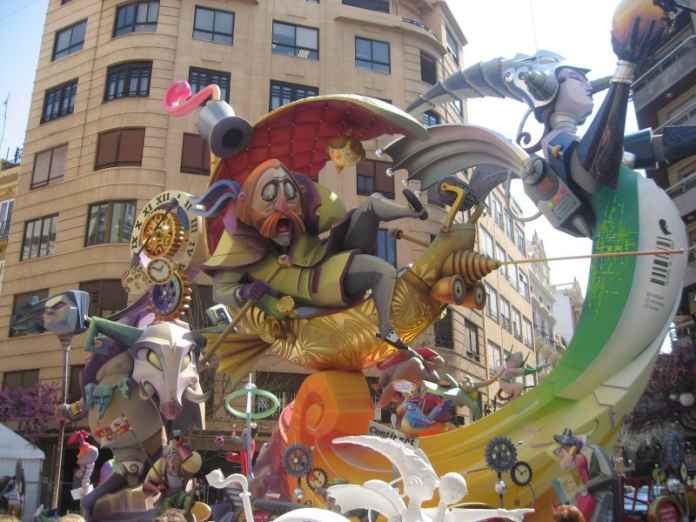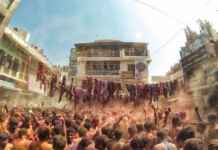Spain is a country known for its unique and odd fiestas. Las Fallas happens to be one among these crazy festivals in Spain. Lights, flowers,gunpowder,traditional costumes, music, and satire characterise the Fallas Fiestas.
Originally held in commemoration of Saint Joseph, the patron saint of carpenters, Las Fallas celebrates the final days of the winter and the arrival of spring. Today, it has evolved into a five day, multifaceted celebration
where the whole town is literally set ablaze. Valencia, usually a quiet city welcomes estimated three million revelers during Las Fallas celebrations. This festival is certainly not for the faint hearted ones.
Each neighbourhood of the city is organized into groups called the Casal faller, which word round the year collecting donations to produce a construction known as a falla which is eventually burnt. Also called ninots, they are huge cardboard, wood and plaster statues. They usually depict satirical scenes and current events, often costing up to US$75,000.
The origin of Las Fallas is not very clear. Some claim that the festival has been celebrated since the Middle Ages when carpenters used to light a bonfire on 19th March, St Joseph Day. Others trace the origin to the second half of the 19th century. In the spring, the lamps were not needed and were ceremoniously burnt at the workshop door. To this small fire the craftsmen added off-cuts, wood shavings and leftovers. The old lamp was placed in a vertical position in the centre, and given a human form called the Ninot / Falla.
In terms of population, Valencia happens to be the third largest Spanish city. To enjoy Las Fallas, Valencia is the best place. The city is well connected via air. The Valencia International Airport serves the city and connects
this city with the rest of the world. So, accessing Valencia is not a problem for tourists. As far as the weather in Valencia during Las Fallas is concerned, the festival is celebrated in the month of March, which travel enthusiasts recommend as the best time to visit the city. Temperatures are moderate, with cafes and restaurants opening out their terraces to the public. So visitors don’t need to carry any woolens with them. However, a light jacket might be comfortable in the evenings.
Las Fallas are divided into seven important stages. On the 1st of March, the City Hall announces the start of the festival period after which the city is decorated with over 700 symbols and figures. Offering Of Flowers or Ofrenda de Flores a la Virgen de los Desamparados is a significant event which occurs on the 17th and 18th of March, from 4pm until nightfall. On these days, members of the Fallas wear traditional costumes and carry bunches of flowers as an offering to their Patron Saint. The Planta and the Cremá are the culminating events, the dramatic closing act when the ninots are set ablaze and destroyed all except one, which is preserved forever in the Fallero Museum.
For the adventurous ones, Valencia in March is the place to be!













